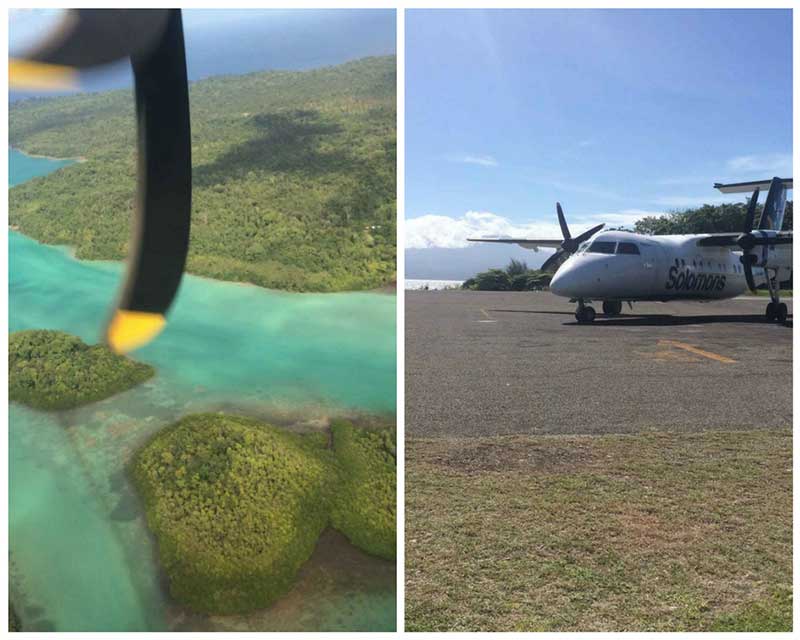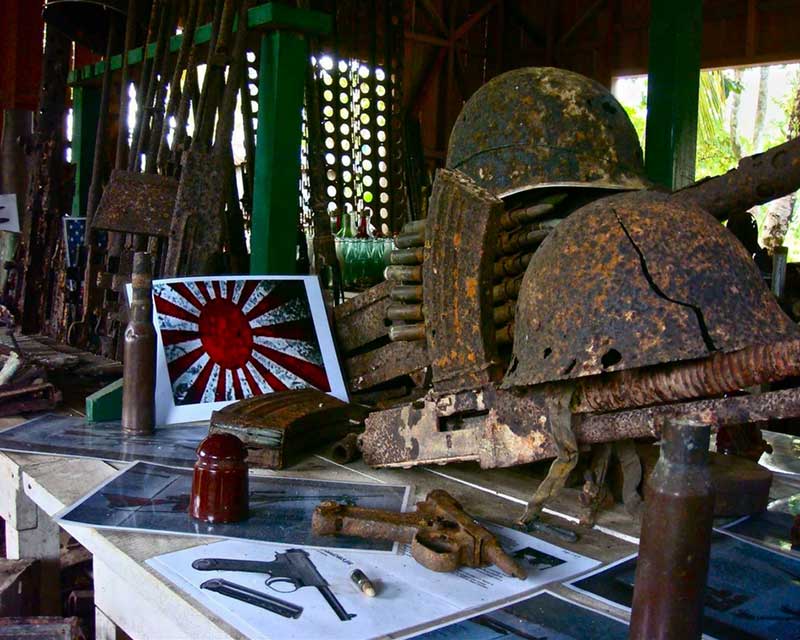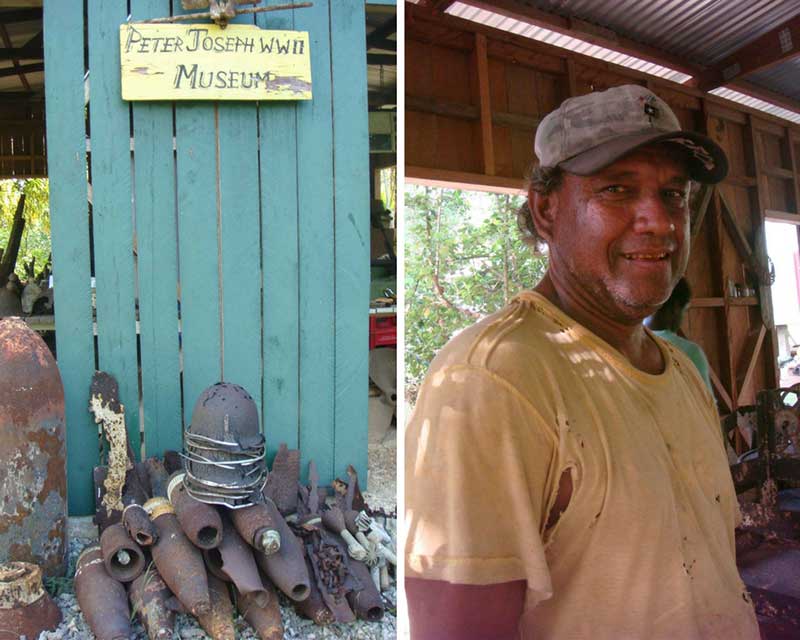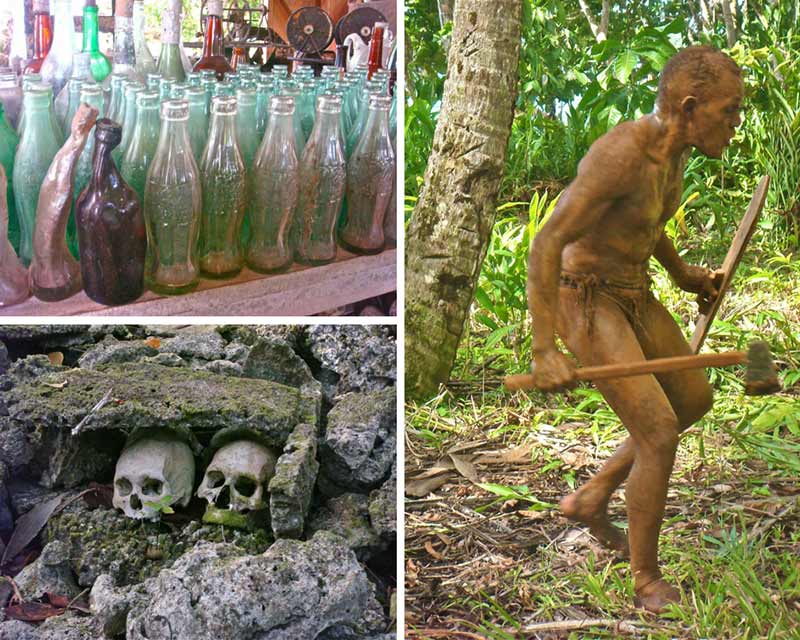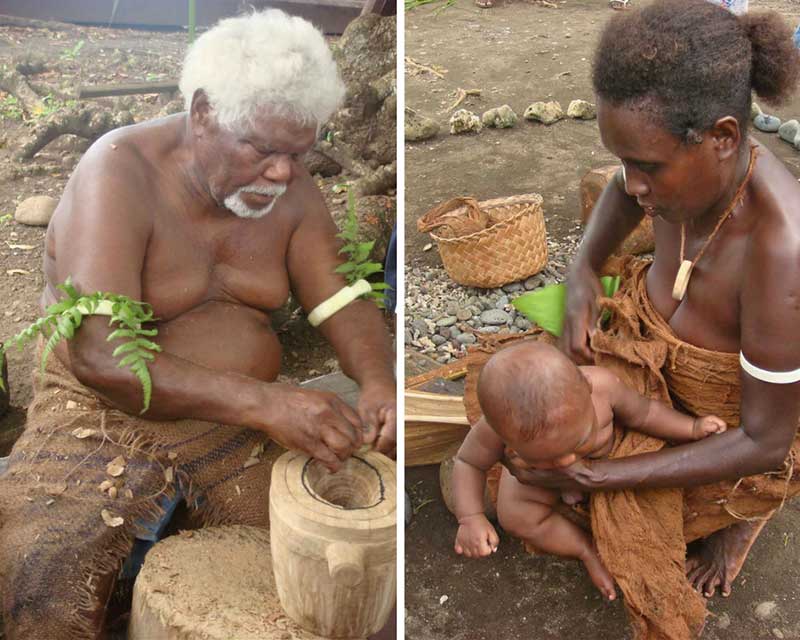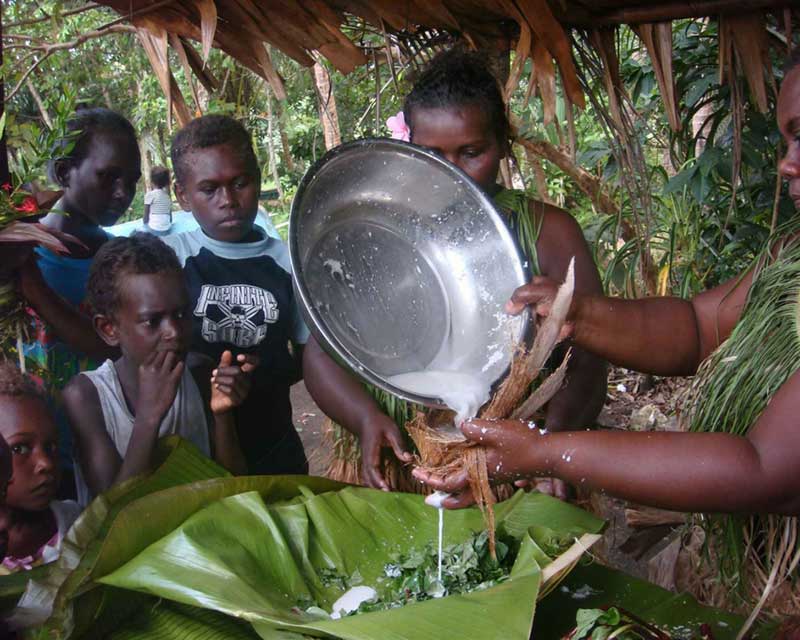The Solomon Islands is the lesser-known island nation of the Pacific, a mere two hours’ flight from Brisbane with Solomon Airlines. If you always thought – like me – that Papua New Guinea looks like a hornbill in flight, the Solomons are on its tail wake.
Never saw it that way? Look again. There are so many wonderful things to do on the Solomon Islands. With pristine beaches, fresh fish, plentiful fruit and friendly people, these islands are a destination you will love. Solomon Islands diving is legendary and there’s history and culture to explore.
Contents
- Solomon Islands
- Flying around the Solomon Islands
- Things To Do In The Solomon Islands
- 1- Take A Joyride To New Georgia
- 2- Go Spearfishing
- 3- Go Diving Near Munda
- 4- Step Back In History To The Peter Joseph Museum
- 5- Meet The Headhunters of Skull Island
- 6- Explore Culture on Rendova Island
- 7- Discover The History of Kennedy Island
- 8- Relax In A Hammock
- 9- Eat A Coconut
- 10- Eat Fresh Fish and Fruit
- 11- Go Swimming and Snorkelling
- 12- Have a Seafood Barbecue
Solomon Islands
Flying around the Solomon Islands
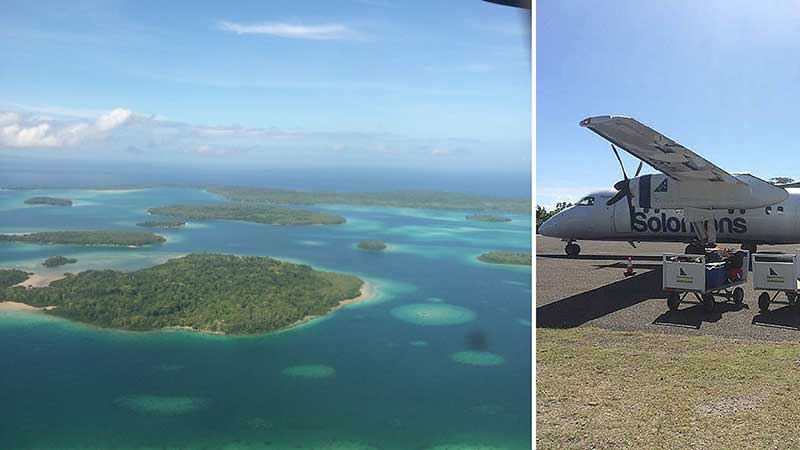
In the Solomon Islands, you commute by boat or plane between the 800 and some islands.
Flights between the islands are covered by Dash-8s or Otters: the small, reliable workhorses of the bush.
This is ‘real’ flying: true joy rides.
Strings of islands big and small, inhabited and un-inhabited are stretched below like a mermaid’s necklace.
Most have their own lagoons.
You can tell by the difference in the colour of the surrounding waters.
In most cases, you can walk from the airstrip to your hotel (and there are a few excellent luxury escapes to choose from).
Waiting lounges could be a pier where you can wait for your flight while you dip your toes in the water.
When you hear the plane landing, you just out your thongs on and walk a few steps to the airstrip.
This is true, wholesome, awesome adventure with an edge.
Shall we leave it as a trade secret or share the Solomon delights with the rest of the world?
Things To Do In The Solomon Islands
1- Take A Joyride To New Georgia
Munda is our destination, the largest settlement on the island of New Georgia in the Western Province of the Solomon Islands and a top Solomon Islands diving spot.
The flight from Honiara, capital of the Solomon Islands, can easily be classified as a joyride.
Solomon Airlines’ sleek Dash-8s glide over a seascape of islands and lagoons, crescents of turquoise waters and expanses of ultramarine blue.
From the comfort of our leather seats, the panorama below unfolds like a brilliant map.
This flight gives you a feeling of ‘real’ flying, when you can see where you are going in stark contrast to the jumbo jets that – as wonderful as they are – cocoon the passengers in a bubble so far up the sky that only sky and clouds are visible.
Touching down at Munda airstrip is exhilarating and descending from the plane onto the tarmac is, again, reminiscent of the early days of flying.
There aren’t any air-conditioned air bridges here, just a blast of warm tropical air hitting you on the face, a warm welcome from the locals and a slow walk to the hotel.
2- Go Spearfishing
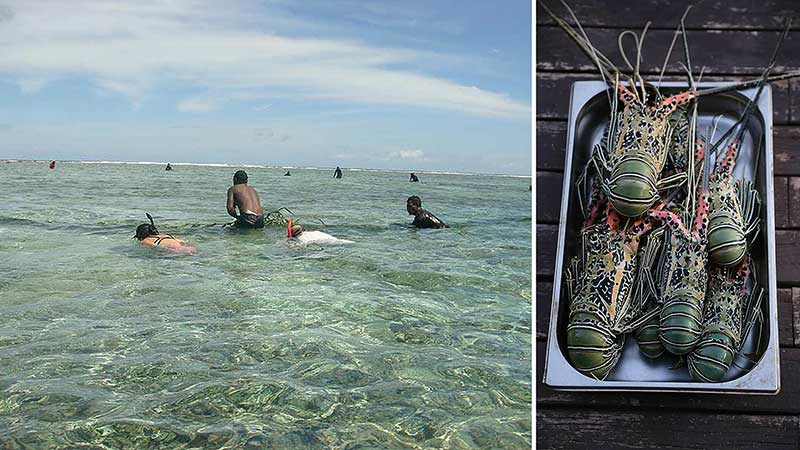
On hearing that the Roviana people were about to do a traditional gathering of the fish nearby, we are rushed by boat to witness one of the most extraordinary ways of fishing.
On arrival to the Vona Vona Lagoon, near Munda, a group of about 20 men are unravelling a huge bale of a special vine looking like palm fronds, tightly tied together to form a very long rope.
The men, waist-deep in the lagoon, make a circle of about 50m in diameter holding the vine underwater.
We are told the fish will come to the centre.
I join in holding the vine underwater hoping for the best.
After some 15 minutes, beautiful reef fish begin collecting within our circle, apparently attracted by the fluttering fronds.
The men start making the circle smaller and smaller and at one point a ‘magic powder’ is thrown into the middle.
They say it will make the fish sleepy therefore easy to catch by hand….
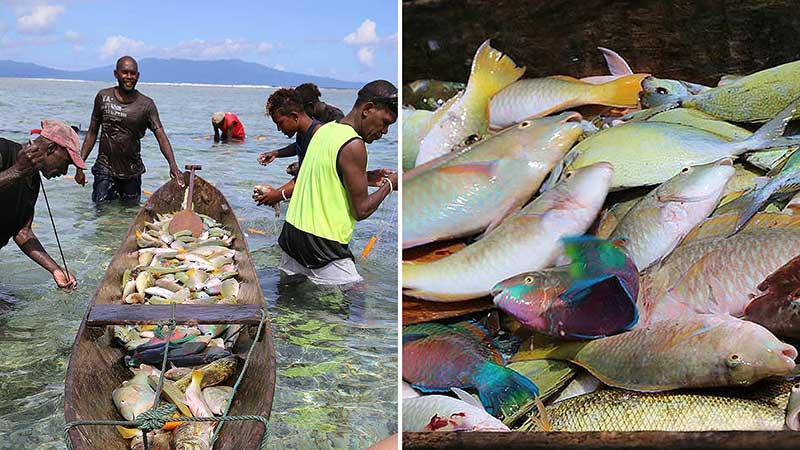
As if by true magic, in a few minutes the fish start to slow down and then there is a burst of flying fish everywhere.
The water in the circle of vines seems to be boiling.
A triggerfish jumps very high and one of us is hit on the back with either its teeth or its dorsal fin.
One of the local Roviana men quickly slits open a small fish, rubs the guts on our friend’s scratch and all pain ceases instantly.
Men are now gathering fish by the armful and placing them in a dugout canoe.
The catch will go on to feed an entire village for a special occasion.
Locals prefer the sweet reef fish to the deep-sea kind.
Dutch and Swiss yachtsmen are the visitors this time.
All keen divers, they have come to explore the war wrecks that litter the bottom of the ocean around these islands.
3- Go Diving Near Munda
Munda diving is among the best in the world.
Drop-offs to over 600 meters with Grey, Blacktip and Whitetip Reef sharks, eagle rays, barracuda, pygmy seahorses, squat lobsters and fiery dartfish are a magnet for international divers.
It is hard to imagine the Solomon Islands were at the centre of the Pacific War over 70 years ago.
A war scenario linked to WWII when fire and brimstone rained on the innocent islanders who had no clue of what was going on in a convulsed, far away world.
American and Japanese warships and planes battled it out in this area leaving behind thousands of dead and an underwater forest of downed planes and ships.
In time, these wrecks littering the ocean’s floor have become a magnet for divers and fish alike.
4- Step Back In History To The Peter Joseph Museum
Near Agnes Gateway Hotel there is a must-see, most unusual museum, the love child of Barney Paulsen who has collected over the years a trove of war paraphernalia, carefully curated it and housed it in an open shed in his own backyard.
Touchingly, Barney Paulsen has named his museum “Peter Joseph Museum”, in honour of the first American soldier whose dog tag he found.
Sadly, Peter Joseph’s tag has never been claimed by any family in the USA.
Paulsen started young and amassed a cache of thousands of war mementos: from machine guns to Japanese water canteens.
On the long trestle-tables lie – neatly classified – bullets, helmets, medical kits, flags, pistols, uniform buttons and a myriad of other finds.
On the ground, spilling outside the shed, plane wings and engines, lie mangled and twisted, a stark reminder of war.
5- Meet The Headhunters of Skull Island
The Roviana people of Munda are a very special and tightly knit community.
It is another Roviana man who takes us to Skull Island, a tiny speck of land where trophy skulls have been relocated.
Headhunting raids were not unusual before the coming of Christian missionaries.
The power of these skulls is evident when the skipper of our boat shouts a greeting to the winds and asks for permission to land.
There are penalties to pay for not doing so.
Our local guide relates an incident that happened this year when a journalist disembarked before the salutation and got very ill indeed.
Local women had to perform a ritual cleansing ceremony at the end of which the hapless journalist got better immediately.
6- Explore Culture on Rendova Island
At Rendova Island a welcoming party greets the visitor with song and dance.
The Titiru Eco Lodge is brand new and sits surrounded by orchids.
A long crushed coral path leads the adventurous to the village but before we get there a high shrill stops us in our tracks.
It is a sentinel in full war paint who, perched upon a bolder, alerts the villagers of our coming.
He then proceeds to utter menacing words demanding to know who we are and where do we come from.
This is, of course, a re-enactment of what used to be the only way to stop raiders.
When we finally make it to the village, the community has set up several stations where arts and crafts plus domestic chores (such as how to bathe newborn babies in a palm leaf) are on display.
Guests of Titiru Eco Lodge can interact with the local community this way.
7- Discover The History of Kennedy Island
Like Vanuatu, the Solomon Islands has a quirky history.
From this very comfortable hammock (and yes, not all hammocks are created equal either) that holds me like a netted fish –well, maybe a dugong in my case, okay?
I can see a small, uninhabited island looking like a floating cupcake, our next destination for a snorkel and a barbecue lunch.
Its name is Kennedy Island and its history one of extraordinary importance to international politics.
It was here in 1943, in the thick of the Pacific War during WWII, that one of the hundreds of Japanese ships rammed and cut in half an American patrol torpedo boat (PT-109) in the middle of the night.
The whole crew was tossed into the waters, some badly injured after the collision.
Their young skipper encouraged the crew to swim to safety to this little island.
He himself -a former champion swimmer- was able to tow one of the injured sailors to safety by putting the vest strap between his teeth and swimming ashore.
After a couple of days break while sustaining life by eating coconuts, the young skipper decided to swim to another island to seek help, taking with him a buddy.
When I look across the waters to ‘the other’ island, I shudder to think what an effort it must have been to reach it.
Unfortunately, this island was also uninhabited. When a canoe appeared on the horizon after a few days, the Americans signalled for help.
The Islanders, thinking the men to be Japanese, quickly paddled away as the Japanese used to take potshots at the Islanders’ canoes, knowing they were scouting for the American forces.
Curiosity brought them back realising the stranded men were friendly.
At the Islanders’ suggestion, the skipper whose name was John F. Kennedy carved a message on a coconut shell that read:
“NAURO ISLAND…COMMANDER…NATIVE KNOWS POSITION…HE CAN PILOT…11 ALIVE…NEED SMALL BOAT…KENNEDY”.
Kumana and Gasa, the two Solomon Islanders, took the coconut and at great risk (in waters patrolled by Japanese ships) paddled 55km away from where an allied Australian Coastwatcher was stationed.
After several agonising days, eight Islanders arrived back to where Kennedy and Ross were, bringing instructions from the Coastwatcher to go with the Islanders to Wana Wana.
The Solomon Islanders had brought food and even a cookstove to make the survivors comfortable.
That afternoon, JF Kennedy, hidden under ferns in a canoe, was taken to the Coastwatcher base from where he piloted a rescue boat to where the rest of the crew were.
So it was that thanks to Eroni Kumana and his friend Biuku Gasa, Lieutenant JF Kennedy and eleven others survived.
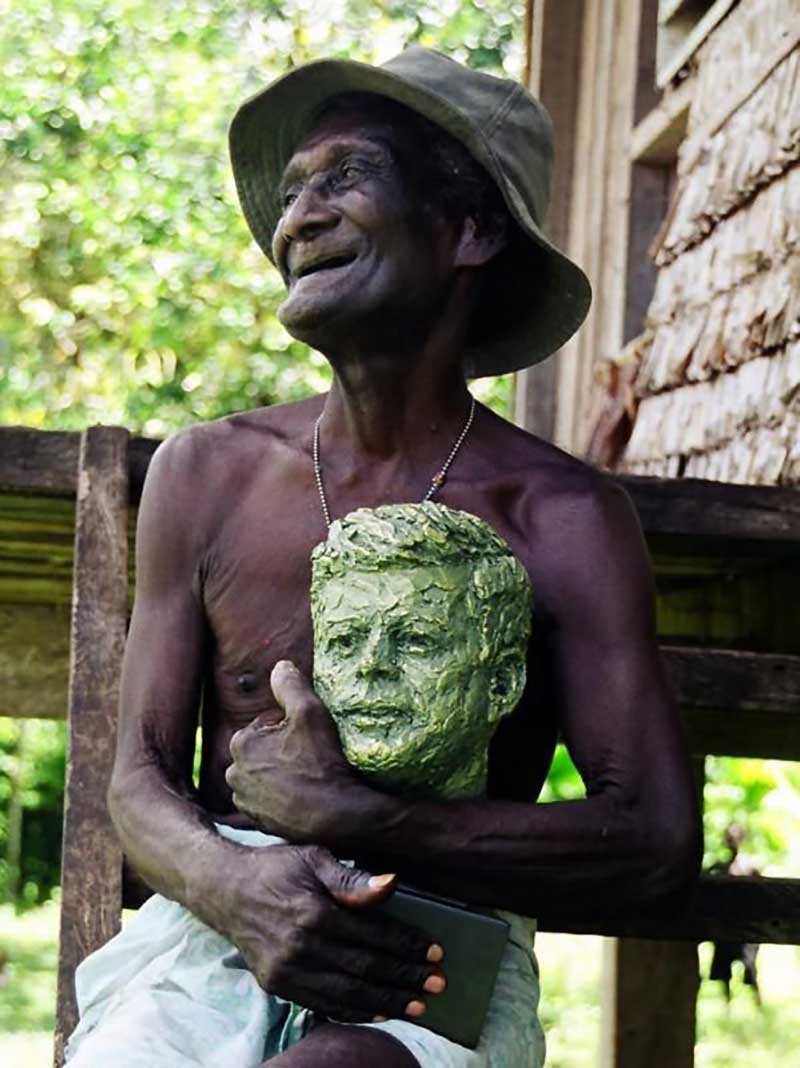
Kennedy went to become one of the most popular presidents of the United States.
He never forgot his saviours but due to the intervention of missionaries in Kumana and Gasa’s island, Kumana never made it to the White House where he had been invited to meet with President Kennedy.
The missionaries deemed Kumana’s English skills ‘not up to standards’ and someone else went instead…
President Kennedy had the coconut shell with the carved message encased in wood and plastic and used it as a paperweight on his desk in the Oval Office for the rest of his short and remarkable life.
It is a great irony that the world knows more about the man who assassinated President Kennedy than it knows about the Solomon Islanders who saved him from certain death.
If you care to address the imbalance, share this true story with your circle…
8- Relax In A Hammock
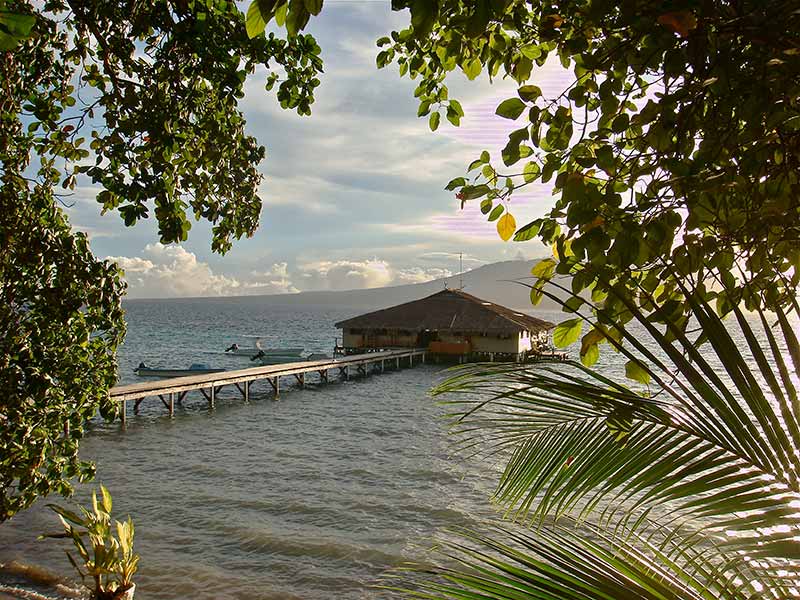
From my hammock at Fatboys Resort in the Solomon Islands, I watch a rainbow forming over the turquoise waters where one of my friends is engaging in a solitary paddle over the reef.
Fatboys’ name was inspired by Charles Dickens’ ‘Joe’ (The Pickwick Papers), the ‘fat boy’ who consumes great quantities of food and constantly falls asleep in any situation at any time of day.
I just feel I could do the same here…
Fatboys sits on Mbabanga Island, an eight-minute boat ride from Gizo, the provincial capital of the Western Solomons. The location couldn’t be more idyllic.
9- Eat A Coconut
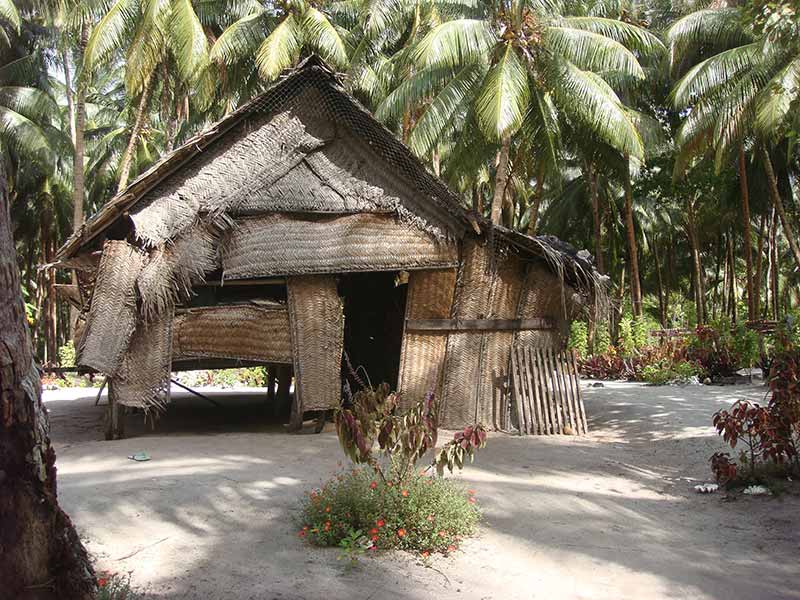
In the Solomon Islands, where there are coconuts there is life.
The ubiquitous coconut palms practically define all of the Pacific Islands.
These graceful, slender palms provide not only food (coconut water, coconut milk, coconut cream, coconut flesh and coconut young sprouts children pick up from fallen fruits and munch on their way to school).
But also a myriad of utensils and toys that can be carved out of their hard shells.
These palms also provide precious building materials such as fronds that are woven for roofs and mats.
Coconuts are life-giving and revered for that reason.
Of course, it is not only coconuts that grow in profusion but also sago palms, pawpaw trees, banana trees, breadfruit trees and a plethora of other fruits and nuts.
10- Eat Fresh Fish and Fruit
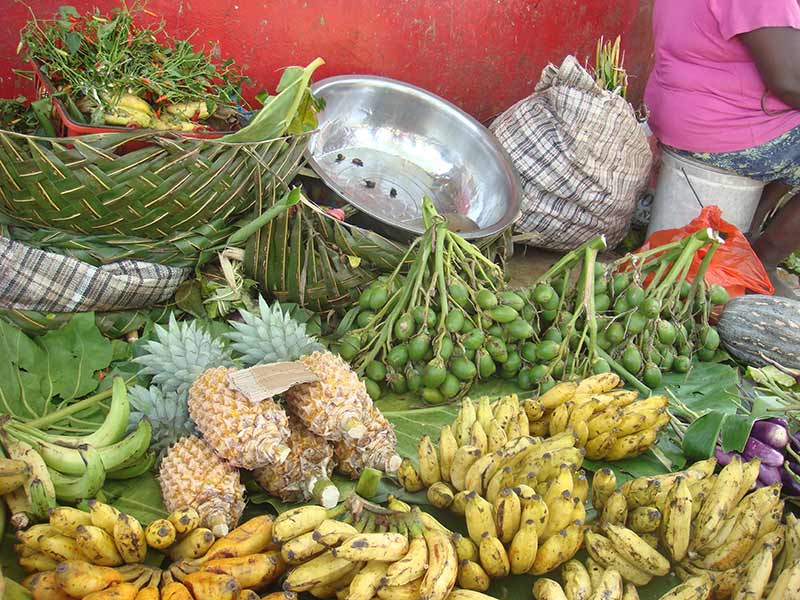
Fish are aplenty, as there is more water than land between these island nations, and relatively easy to catch.
No wonder Pacific exploration fleets of the 18th-century, headed by Captain Cook, Louis Antoine de Bougainville and others, struggled to keep their crews on board.
Men jumped ship and disappeared into the bush lured by, not only the beauty of the women but also the perceived ease of life on the islands.
You only need to reach up to pluck a fruit; crack a coconut for a refreshing drink; spear a fish at low tide or shallow – dive for lobster.
The beachcomber concept was created here.
However, as with many other things in life, not all coconuts are created equal.
Below is the true story of a very special coconut that had a role in saving eleven castaway lives but also had an incredibly high impact on world politics.
11- Go Swimming and Snorkelling
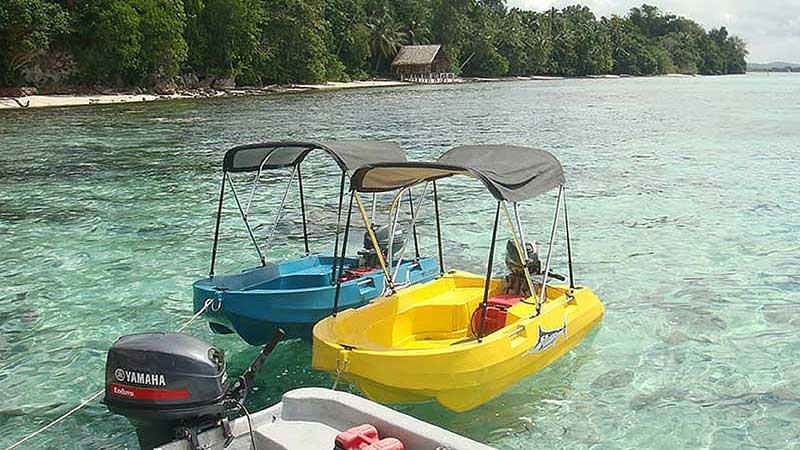
One of the fun things to do in the Solomon Islands is to go swimming and snorkelling.
At Fat Boys Resort, you don’t have to go far to encounter reef life at its best.
Fatboys Resort is the ultimate beachcombers’ paradise on Mbabanga Island in the Western Solomon’s Province.
Fatboys has fabulous beach bungalows on stilts, connected by a 100m walkway to the restaurant, bar and social hub over the reef.
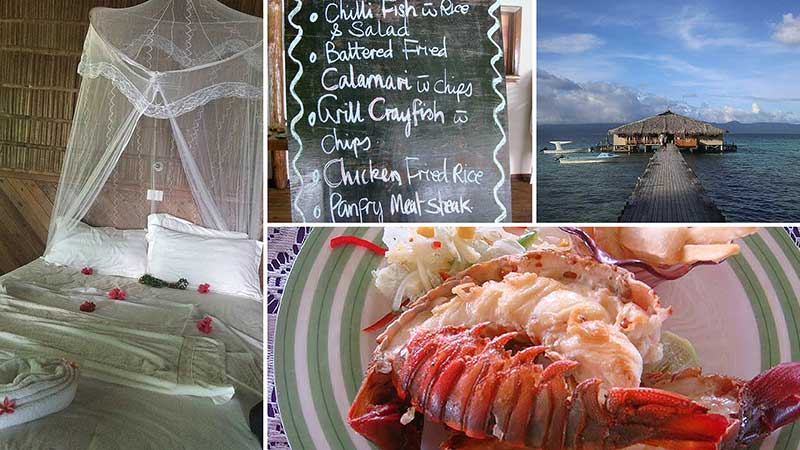
The social hub is a wall-less pavilion where lobster is never off the menu and sorties by paddleboards and cute little bathtubs (well they are proper boats but they look like toys) with outboard motors can be had to explore the surrounding lagoon.
In fact, just under the restaurant, attracted by the creatures that attach themselves to the pylons, thousands of reef fish come to forage.
There is even a Nemo colony here!
12- Have a Seafood Barbecue
Agnes Gateway Hotel is a five-minute walk from the airstrip and the gateway to a Pacific experience.
Bouganvillea cascades down the front, palms sway in the breeze and trees with the most unusual fruits hanging like tennis balls from branches, welcome visitors.
A path of crushed coral link the bungalows and of course the first thing one does is dump the bags and head for the waters’ edge where sailboats with foreign flags bob up and down against a lavender sky.
A barbecued seafood spread is ready to be consumed right after dark and the fish and lobsters are cooked to perfection, as always on these islands.
The divers and all other guests are happy and mellow celebrating yet another day of exploration both on land and at sea – and under the sea – Solomon style.
Plan Your Trip

Rent A Car – Find the best car rental rates at Discover Cars. They compare car hire companies to provide you with the best deal right now.

Find A Hotel – If you’re curious about this article and are looking for somewhere to stay, take a look at these amazing hotels.
